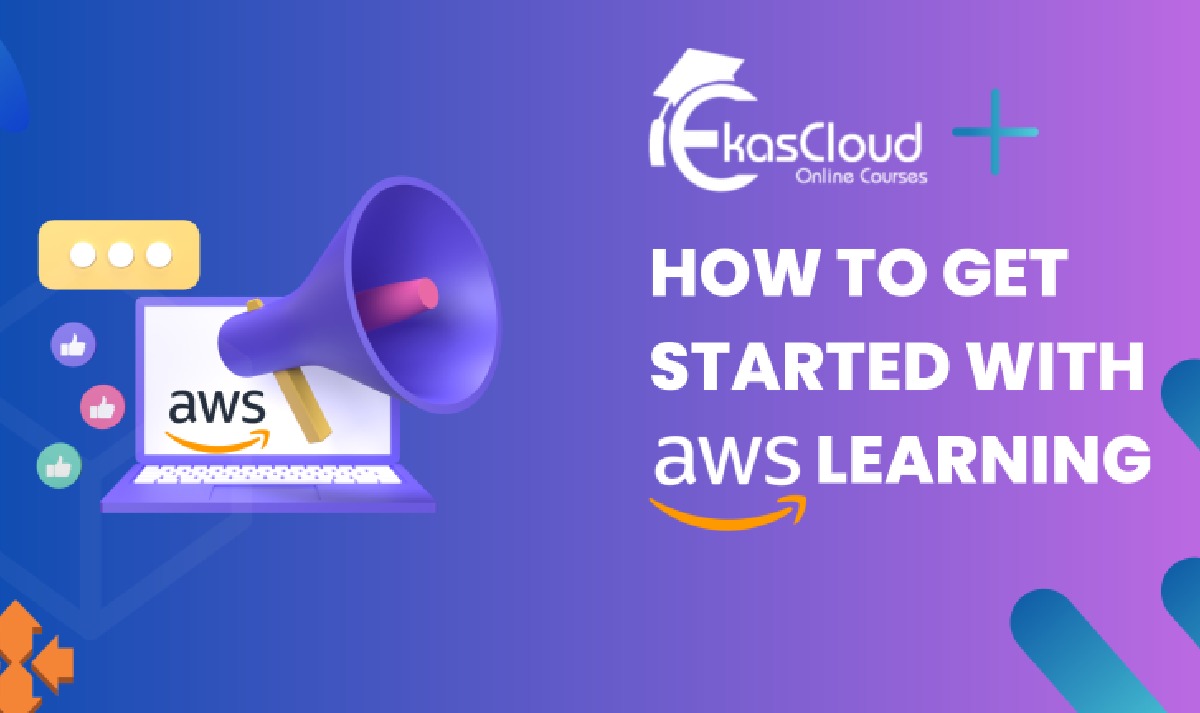
Getting started with AWS (Amazon Web Services) learning is a great way to enhance your cloud computing skills. Here are some steps to help you get started:
1. Set Clear Goals: Determine what you want to achieve with AWS. Are you interested in becoming an AWS Solutions Architect, a DevOps engineer, or learning specific services? Setting clear goals will help you focus your learning efforts.
2. Understand AWS Fundamentals: Start by building a strong foundation in AWS. Familiarize yourself with basic concepts like regions, availability zones, EC2 instances, S3 buckets, IAM (Identity and Access Management), and VPC (Virtual Private Cloud).
3. Utilize AWS Documentation: AWS provides comprehensive documentation for all its services. The AWS documentation is an excellent resource to understand the services, their use cases, and implementation details. Refer to it regularly as you progress in your learning journey.
4. AWS Free Tier: Sign up for an AWS account if you don't have one already. AWS offers a Free Tier that allows you to explore many services for free within certain usage limits. It's an excellent way to experiment and practice without incurring charges.
5. Choose Learning Pathways: AWS offers various learning pathways and certifications. You can explore the AWS Training and Certification website (https://aws.amazon.com/training/) to find the learning paths that align with your goals. They provide learning resources, training courses, and practice exams.
6. Online Courses: Take advantage of online courses and tutorials available for AWS. Platforms like Coursera, Udemy, A Cloud Guru, and Linux Academy offer comprehensive AWS courses for beginners to advanced users. These courses provide structured content and hands-on labs to reinforce your learning.
7. AWS Training: Consider attending official AWS training courses if you prefer a guided learning experience. AWS offers both classroom and virtual instructor-led training options. These courses are taught by AWS experts and can provide a deeper understanding of the services.
8. Hands-on Practice: Hands-on practice is crucial for mastering AWS. Create a personal project or try to replicate real-world scenarios using AWS services. This will help you gain practical experience and reinforce the concepts you learn.
9. Join AWS Community: Engage with the AWS community to stay updated on the latest trends, best practices, and tips. Participate in forums, attend meetups or webinars, and follow AWS blogs and social media channels. This will help you learn from others and expand your network.
10. AWS Certifications: Consider pursuing AWS certifications to validate your knowledge and enhance your career prospects. Start with the foundational certification (AWS Certified Cloud Practitioner) and then choose a path based on your goals (e.g., AWS Solutions Architect, AWS Developer, AWS SysOps Administrator).
Remember, learning AWS is an ongoing process as the platform continually evolves with new services and updates. Stay curious, keep practicing, and leverage the abundant resources available to deepen your understanding of AWS.







